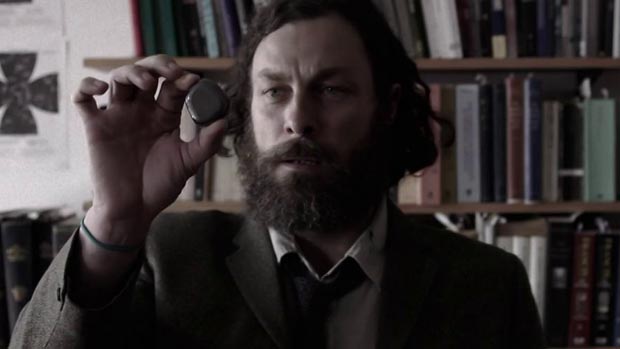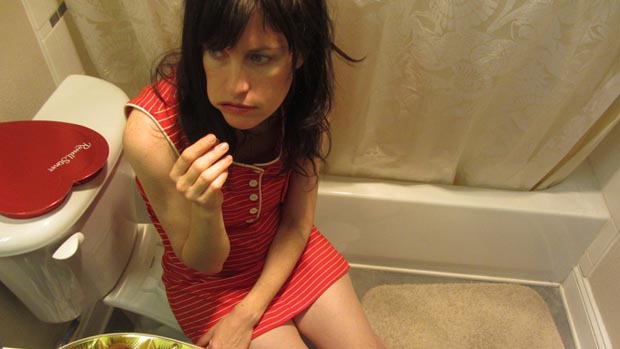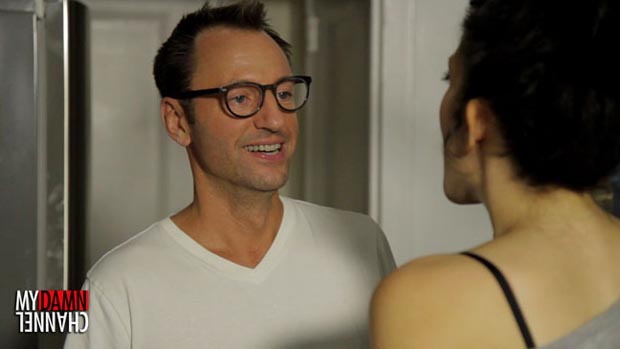 Back to selection
Back to selection
Five Different Routes to a Web Series

The web series can take many shapes, from a no-budget serial made in high-school media classes to Joss Whedon’s Dr. Horrible’s Sing-Along Blog to Netflix’s long-format House of Cards. These are just three of probably thousands of web series out there produced, written, and directed specifically for the Internet. But there are other roads to web series. Here are five of them.
The Longish Short Film Repurposed into a Web Series
Filmmaking partners Jacob Hensberry and Ken Cook had plan for their short film, Planet X, a stylized, modern romantic comedy with sci-fi leanings. “We were going to use the traditional formula of making a short, getting into some festivals, getting some attention and turning it into a feature,” director Hensberry said. But Cook, his writing and producer partner, knew there was a problem. “I immediately knew that we were screwed on the festival front. [Planet X was] too long and it has a cliffhanger ending. That’s not to say that I wasn’t pleased with it, because I was.” Still, they tried, and when their top five festivals rejected them, they started considering alternatives, and shelving it was not one of them. Plan B was turning it into a web series and uploading it on Vimeo.
“It was a good, easy way to get the film seen by the widest audience,” Hensberry said. “Putting it up as a 26-minute whole really isn’t palatable for web audiences, so we cut it into episodes.”
The tight structure of Planet X made cutting it into five roughly five-minute episodes relatively straightforward. “It was easy to just end the episodes when the next plot point was about to unfold,” said Hensberry, an editor by day. “This resulted in every episode having a ‘cliffhanger’ ending which, at least in the world of episodic TV, is usually what you want. Especially with this kind of show.”
And the web series cliffhanger? Does that mean Hensberry and Cook will create more episodes? Cook believes the story deserves to have a resolution. “We, as the writers, know exactly what happens next and we know exactly how the story ends. I just hope that we manage to find the ways and means to give them that ending.”
This is independent filmmaking, so there are always ways and means. Production companies, backed by sponsors who use web series to advertise their product, have shown interest in Planet X. And there has also been interest from online portals that offer revenue streams. But one way or another, Hensberry and Cook are determined to complete the series. “We’ll probably just finish it ourselves as time allows,” Hensberry said. “Hey, that’s yet another benefit of this film becoming a web series – no deadlines!”

The Unreleased Feature Film Repurposed into a Web Series
Benjamin Piety likes to tread the line between narrative and experimental film. In 2006, his daring short film The Lonely Lights. The Color of Lemons was awarded SXSW’s Special Jury Prize for Best Experimental Short. Piety’s next project went even further. 2 28 is based on the entries of a blog he kept, beginning on February 28, 2008, when he tested positive for HIV.
“The film, from its inception, was going to be experimental, long monologues over abstract imagery,” Piety said. “We had hopes, through our contacts at festivals and the uniqueness of the project, that it would get some festival play. Something that a festival programmer might fall in love with.”
Though he was happy with what he shot, Piety had his doubts about 2 28 as an 84-minute feature from the start. “All the way through, there was something … off. Something that, looking back, I knew but maybe didn’t want to admit.”
The film was experimental, difficult. “It was definitely not a film for the passive viewer.” He submitted 2 28 to major festivals and the programmers didn’t bite. It was then that he thought of turning it into a web series.
“The illusion, the fantasy was lifted and I was able see the film in a completely different light,” he said. “Everything pointed to a more episodic release, rather than having an audience sit through 84 minutes of monologues. Breaking it up felt right. Like, this was what we actually created.”
Turning it into a web series didn’t require any re-shooting or re-editing, just some clean up. And Piety believes the repurposed film works better now than as a feature. “Ends of scenes had more punch,” he said. “And in episodes, people can take it in at their own pace, can absorb the details of the monologues and the visuals. And leaving things unfinished felt like the right emotional beat for the story.”

The Released Feature Film Repurposed into a Web Series
Marc Clebanoff’s feature Break, a pulpy, comic-book action mob film, had the star power for a small theatrical release (Michael Madsen, Charles Durning, and David Carradine in what was billed as his last film role), but Clebanoff saw the release less as an opportunity for the film to make money and more as a way to attract an international audience. Carradine’s death brought the film plentiful press, but there was a downside. “The visibility of Break was huge but ultimately it equated to mass piracy. I felt that rehashing the film as a web series, No Clean Break, would give it a second life and the ability to monetize some of the online viewership.”
Not completely satisfied with Break due to compromises he felt he had to make, Clebanoff saw No Clean Break as an opportunity to make the film he intended. Clebanoff used footage that wasn’t included in the feature, gave the film a comic-book stylization make-over, added new music, and strung it all together with a voice-over from the protagonist. “I wanted to make sure that someone who invests their time in watching both won’t feel ripped off,” he said, “or like they got conned into watching the same thing twice.”
Clebanoff’s biggest challenges with turning Break into No Clean Break were psychological and financial. “After you spend so much time working on a film, it’s very liberating to move on to new endeavors.” Since he “basically recut the film from scratch,” that liberation would have to wait. Regarding money, simply put, there was none.
“There was no budget to recut and re-stylize the film. It was entirely my own solo effort.” But he didn’t mind putting in the sweat equity. “Having already played a bit in the new media space, I knew it would be a good opportunity to show the audiences something significantly bigger than most of the web content circulating.”
Was it worth the psychological and financial costs? “At the end of the day, I’m glad I went through with it,” Clebanoff said, “and I’d definitely consider doing it again with future projects.”

The Proposed Web Series Shot as a Feature Film then Repurposed into A Web Series
When Ilya Chaiken submitted a grant proposal to the Princess Grace Foundation for her project The Unlovables, a dramedy about the life and love of an aspiring actress, it was for a project that would experiment with short format video for the web, and that would then be merged into a longer format piece.
“I wrote all the episodes at once, with the idea that when strung together, they would amount to a feature,” Chaiken said. “But my background is in film, so when I was facing the prospect of broadcasting something on the internet, I realized there was this whole other world of operating that I didn’t know much about. So I opted to revert to what was more familiar to me, and just make it into the movie.”
Chaiken scheduled a few weeks of shooting and the early phase of production went smoothly. But a series of personal catastrophes brought the project to a halt. When she resumed the project, so much time had passed that she wasn’t able to gather the same team. “Consequently, everything seemed fragmented to me. This eventually led me back into thinking of it as episodes, and I ended up cutting it that way.”
When enough time passed for Chaiken to be able to separate the personal turmoil associated with making the film from what she actually shot and edited, she was pleased with what she had. “I realized that it was incredibly good shit. I mean, the performances by Eleanor Hutchins and Kevin Corrigan are just about the best things anyone is going to see on the Internet. Period. And I just had to put it out there in the world.”
Since the film was scripted as a series of episodes, cutting The Unlovables into a web series was not an issue, and forgoing post expenses like high quality mixing and color correction were a benefit. What was worrisome to Chaiken was navigating the world of web distribution. “I was attracted to the idea of taking content that the artist owns and distributing it directly to the audience. But of course it’s not that simple. I’m not a social media person, nor do I aspire to be, so the whole ongoing process of attracting people to your online video is pretty daunting, and it’s a full-time job in and of itself. It’s the same general challenge as with film distribution, which is that publicity can be your biggest battle.”
She enlisted the help of Larry Fessenden and Glass Eye Pix (Fessenden is also part of The Unlovables’ ensemble cast). Together they are exploring other distribution options, including developing new platforms as well as using traditional ones. “Larry and I agree that it’s fun to exploit it as an ongoing evolution,” Chaiken said. “It’s like a metamorphic creature that you may see appear in different skins from one platform to the next. I don’t have a problem with releasing different versions of it and altering the material.”

The TV Pilot Repurposed and Expanded into a Web Series
Eric Schaeffer has a motto: “Never be in a position where ‘no’ can stop me.” This means having a Plan B. And a Plan C. Turning his new project, Eric Schaeffer: Life Coach, a scripted comedy about a hapless life coach, into a web series called on a Plan D. Or maybe a Plan E.
Eric Schaeffer: Life Coach was conceived as television series. He shot a 30-minute pilot, and when he didn’t get the deal he wanted from cable TV, he decided to shoot six more 30-minute episodes. His intention: “I could go back to cable TV and see if an entire season was attractive to them but if not, the plan was to make a feature-length film out of the footage as well,” Schaeffer said. “That way, if I got a pass from TV but the film hit, I could have a TV series with a ton of scenes that were not in the film (over three hours of content) ready to go immediately as a web series.” As with No Clean Break and The Unlovables, the film and series would be different. “Many of the plot lines and characters from the TV episodes didn’t even make it into the movie version at all so the series content would be very fresh.”
When the networks passed, he cut the show into a film and submitted it to Sundance. When they passed on the film, Schaeffer decided he wanted to get the work out there rather spend months trying to sell it and distribute it as a film.
But Schaeffer’s internet distribution model is a bit different from those previously mentioned. Most webisodes have a running time of three to eight minutes, but with House of Cards Netflix is betting that people will watch long-form content on the Internet as well. So is Schaeffer.
“Rob Barnett at My Damn Channel loved Life Coach and we decided the best way to go was a bit of a hybrid. Break up the full-length episodes linearly and release them as three- to five-minute webisodes on My Damn Channel every week, while also offering the full-length director’s cut episodes (which have more scenes than the shorter webisodes) and full season on my website www.MrEricSchaeffer.com. That way, if people want to see the whole episodes or entire season right away, they can buy it there now and not wait for it to play out weekly on My Damn Channel.”
Schaeffer sums up why each of these filmmakers ultimately repurposed their films into web series. “ ‘No’ is out of the equation, neither stopping me from doing what I love, making TV shows and films for people, nor stopping them from being able to see them.”
